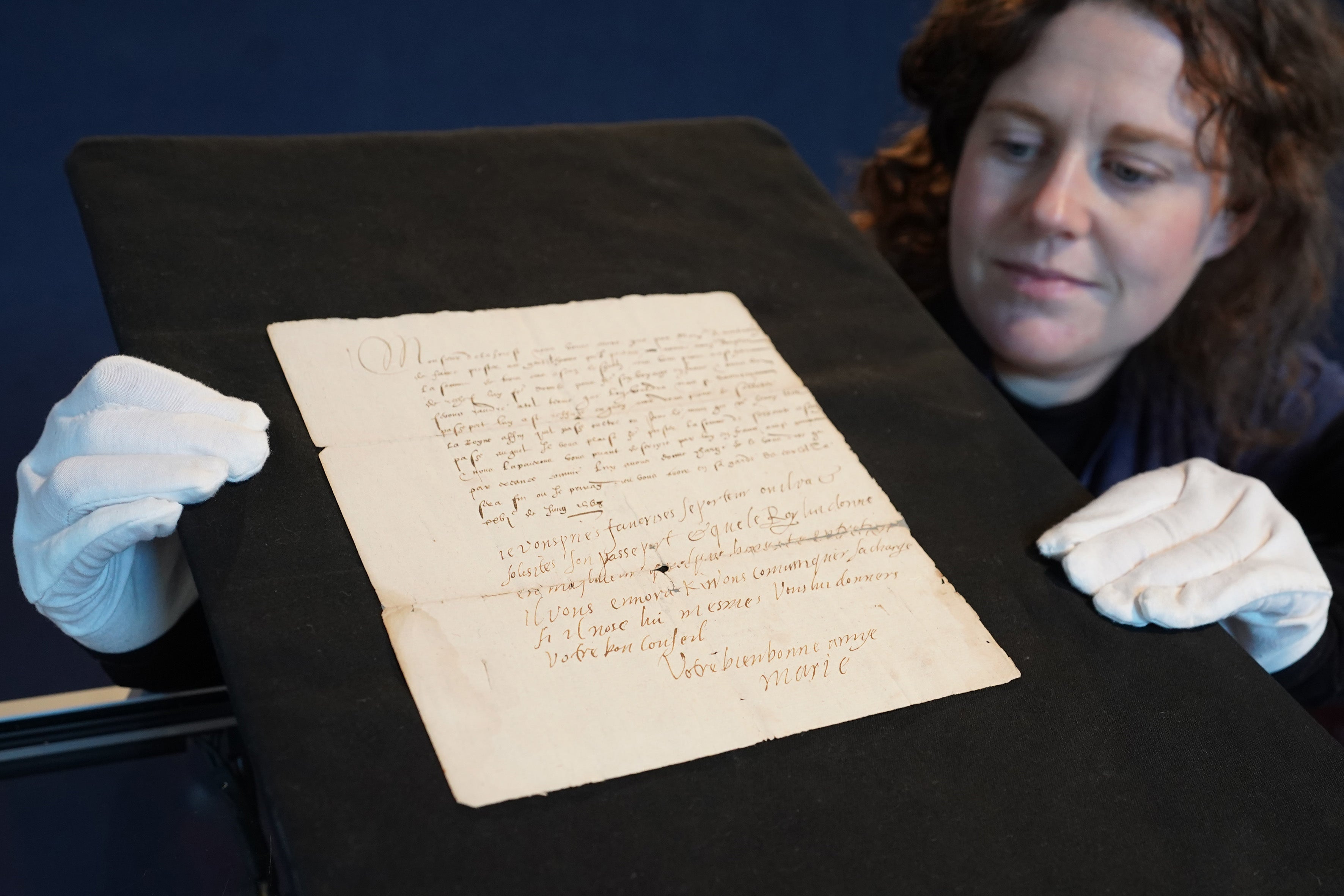Letter written by Mary Queen of Scots expected to fetch up to £18,000 at auction
Lyon & Turnbull said they expect a lot of interest in the sale of the letter which was written in 1568.

Your support helps us to tell the story
From reproductive rights to climate change to Big Tech, The Independent is on the ground when the story is developing. Whether it's investigating the financials of Elon Musk's pro-Trump PAC or producing our latest documentary, 'The A Word', which shines a light on the American women fighting for reproductive rights, we know how important it is to parse out the facts from the messaging.
At such a critical moment in US history, we need reporters on the ground. Your donation allows us to keep sending journalists to speak to both sides of the story.
The Independent is trusted by Americans across the entire political spectrum. And unlike many other quality news outlets, we choose not to lock Americans out of our reporting and analysis with paywalls. We believe quality journalism should be available to everyone, paid for by those who can afford it.
Your support makes all the difference.A letter featuring the handwriting of Mary Queen of Scots is to go under the hammer next month.
The document, which could fetch between £14,000 and £18,000, is an appeal from her to the French ambassador in England to allow the safe passage of Scottish nobleman, George Douglas, to France.
It was written in Carlisle Castle two months after her escape from Lochleven Castle in Perthshire on May 2 1568, where she had been imprisoned for nearly a year following a forced abdication in favour of her infant son, James VI.
Mary hoped that by helping to ensure a safe journey to France for George Douglas, he would intercede with the French king on her behalf to help secure her freedom.
Given Mary’s unique place in history we anticipate a lot of interest in this sale
The letter will be sold live and online by fine art auctioneers Lyon & Turnbull, which has its headquarters in Edinburgh, on Wednesday February 2.
Cathy Marsden, rare books, manuscripts and maps specialist at Lyon & Turnbull, said: “It is rare for a document with Mary’s handwriting to come up for auction. Having custody of this fragile letter is quite special.
“There are 12 lines written by a secretary, and (an) additional six lines in Mary’s own hand. The letter is signed, ‘Votre bien bonne amye, Marie’, which translates as ‘Your very good friend, Mary’.
“Given Mary’s unique place in history, we anticipate a lot of interest in this sale.”
The letter asks the French ambassador to Queen Elizabeth I to lend George Douglas, the bearer, 300 ecus (gold coins) and to negotiate with the French royal family to secure George’s trouble-free passage.
Mary’s escape from Lochleven had been helped by George Douglas and his cousin, William Douglas.
She went to England to seek refuge from her cousin, Queen Elizabeth I, but was apprehended by Richard Lowther, deputy governor of Cumberland, and escorted to Carlisle Castle.
Mary was imprisoned by Queen Elizabeth I for 19 years before she was beheaded in Fotheringhay Castle in Northamptonshire on February 8 1587 at the age of 44.